Tribal Weddings in India are not just about two people. They are about the land, the songs, the ancestors, and the shared breath of a whole village.
I may not have attended every tribal wedding across India—but I’ve walked through their stories, sat with elders who carry these rituals in their bones, and once even danced through a rare Ladakhi Buddhist wedding in Sankoo that opened my eyes to a world far away from glitter and noise.
Let me take you through what I’ve discovered.
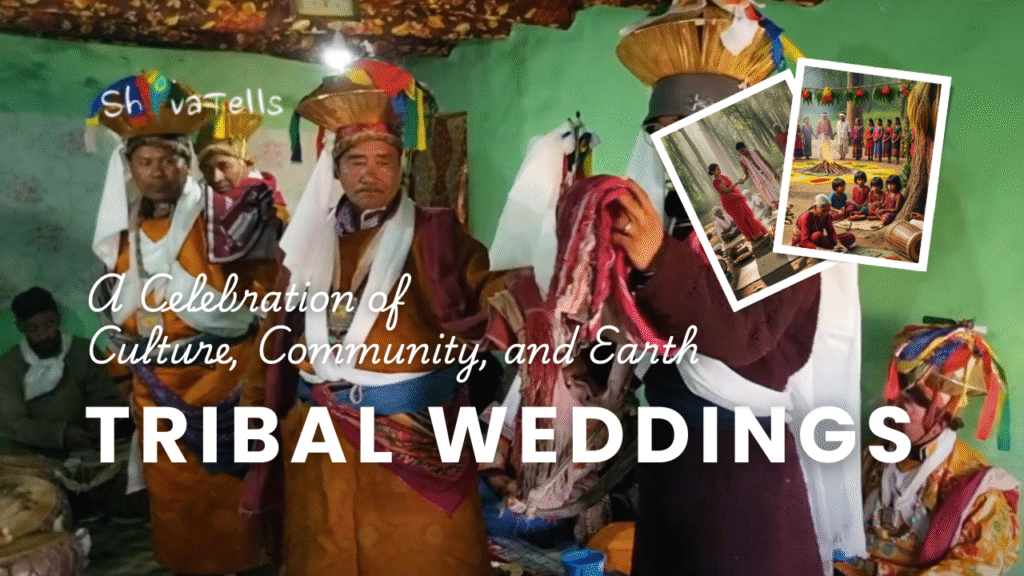
Table of Contents
Weddings That Begin in the Forest, Not in a Hall
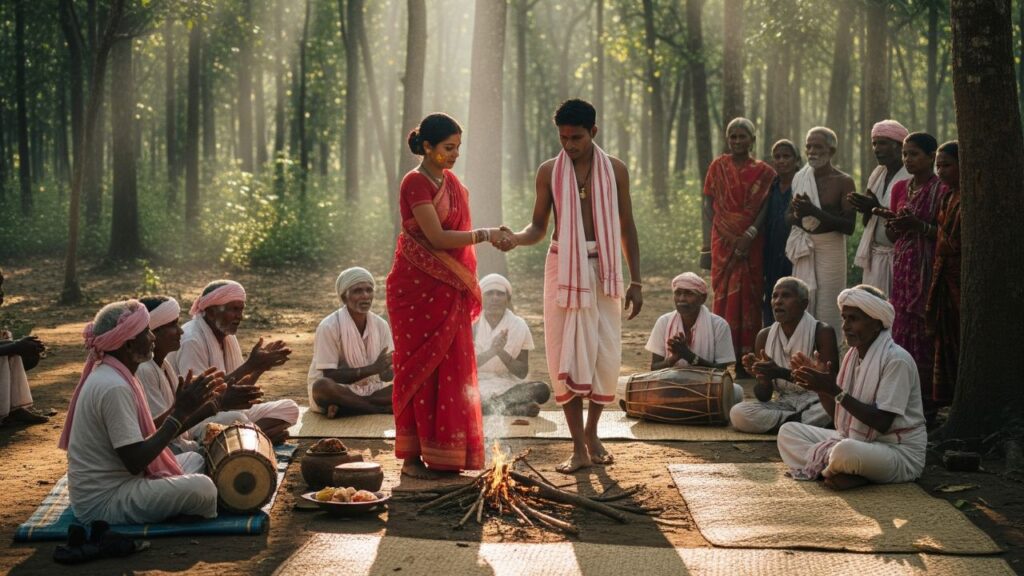
In most cities, a wedding begins with a decorator’s arrival. But in tribal communities, it begins when the forest agrees.
For the Saura tribe of Odisha, weddings happen under open skies. The bride wears a red sari, painted with turmeric and ash. There is no priest. No stage. The elders gather under trees, singing songs older than any written scripture. A fire is lit with mahua wood, and the couple circles it slowly while the village hums in one rhythm.
Here, nature is the only witness needed.
No Pandit, No Pandals—Only Elders and Earth
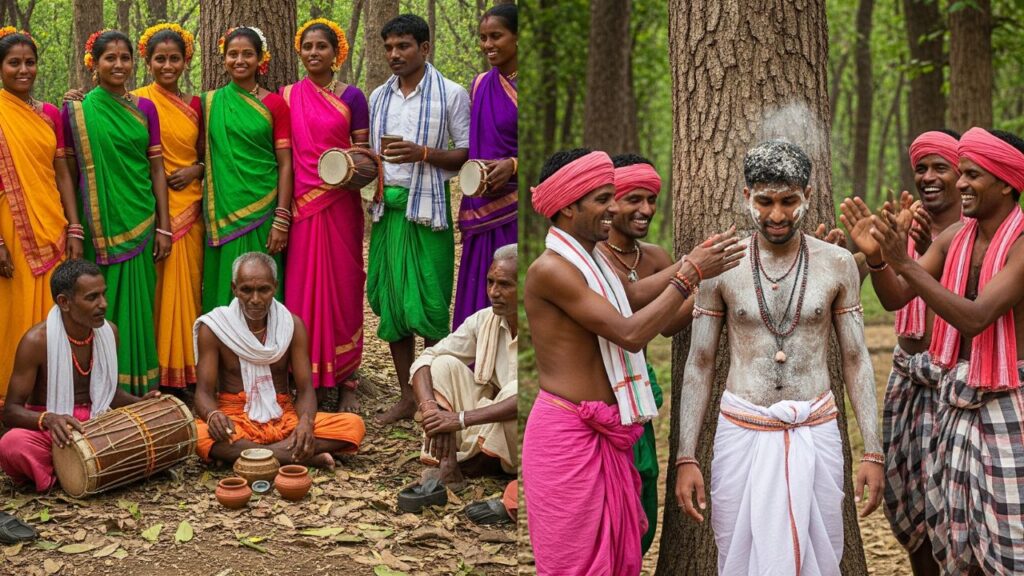
In Jharkhand, the Santhal tribe begins their weddings by offering a bowl of rice and flowers at the base of a Sal tree. The belief? That the forest spirit must bless the union before anyone else.
No big mandaps, no paper contracts. Just storytelling, rice wine, and consent.
Among the Baiga tribe in Central India, the groom is covered in cow dung and ash by his friends. At first, I found it strange. But then I learned—it’s a symbol. A return to the earth. A reminder to begin married life in humility.
Every action in these weddings has meaning, not makeup.
Ladakh’s Lost Wedding Songs: My Experience in Sankoo
One wedding I did attend was unlike any other.
In Sankoo, a quiet corner of Ladakh, I got the rare chance to be part of a traditional Buddhist Ladakhi wedding. These weddings, known as Bakstan, are fading fast. But here, the songs are still alive—thanks to a passionate team called Napas, who sing and dance for days without sleep.
Then comes Thipa—the bride’s welcoming procession. Unlike most Indian weddings, the groom doesn’t go to the bride. The bride is brought to his house after detailed visits by elders to inspect everything from food to emotional readiness.
There’s Chang (local barley beer) flowing, roti, butter tea, and smiles that stretch beyond language.
But my favourite part? The Gopals—men whose sole job is to serve Chang non-stop. Their energy, their laughter, and their stealthy top-ups make sure no one ever sits still!
This was no wedding. It was a living museum of love, land, and laughter.
Where the Village is the Family
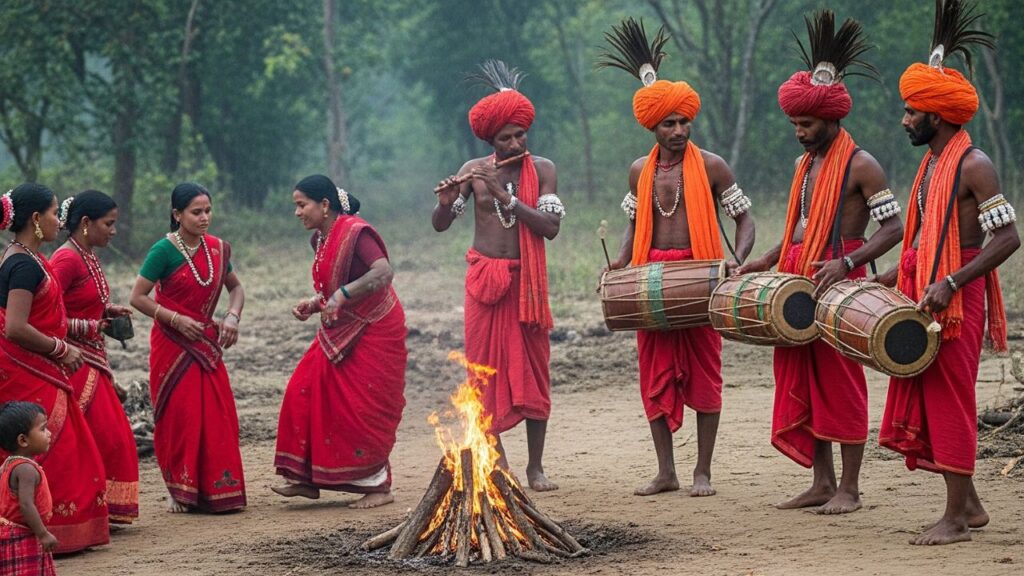
In tribal weddings, there is no VIP list. Everyone is family.
In Chhattisgarh, the Gond tribe dances all night. Drums echo across forests, old women ululate, and even toddlers jump in. There is no stage performance—it’s a collective celebration. Everyone contributes, from cooking to cleaning, singing to storytelling.
In Telangana, among the Koya tribe, there is no religious figure. Just elders and shared food. Marriages happen with mutual consent, not loud declarations.
Dowry? No gold. Just millet, rice, goats, or shawls. Practical, symbolic, and stress-free.
A Tradition on the Edge—But Still Alive
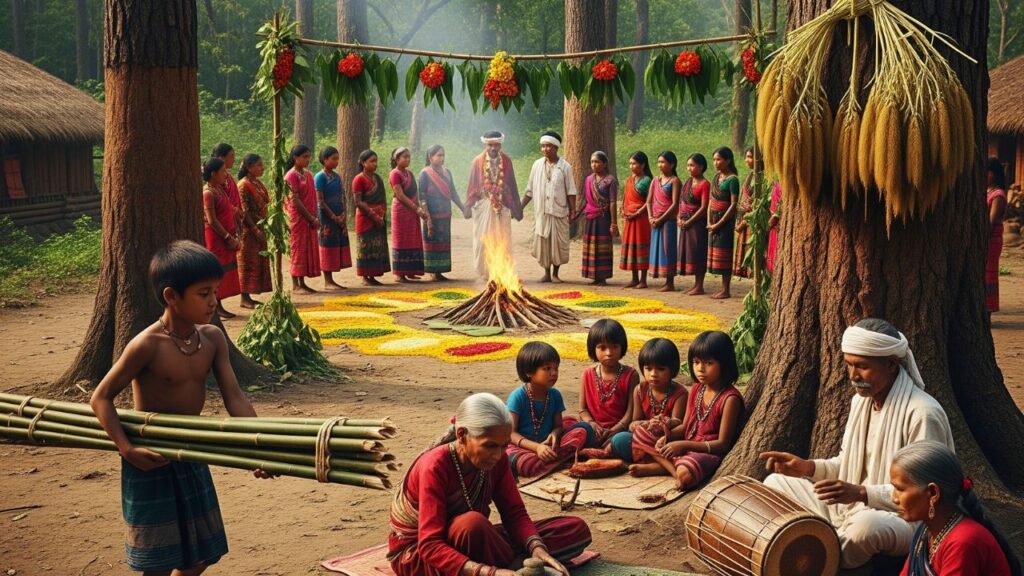
These weddings aren’t immune to change. Cities are growing. Mindsets are shifting. Many tribal couples now choose temples or register marriages to “fit in.”
But when I visited Bastar in Chhattisgarh or remote corners of Arunachal Pradesh, I still saw sparks.
Children learning wedding chants. Grandmothers teaching recipes. Boys helping build huts for the new couple—not because they were told to, but because “one day, someone will do it for me,” as a 10-year-old once told me.
How to Witness a Tribal Wedding in India
If this world pulls at your heart, here’s how you might step into it—with respect:
Where to Go
- Odisha – Saura, Bonda, Kondh tribes
- Jharkhand – Santhal, Munda weddings
- Nagaland – Ao, Lotha tribes
- Chhattisgarh – Gond, Baiga communities
- Telangana – Koya tribe
- Ladakh (Sankoo) – Rare Buddhist weddings like Bakstan
Best Time to Visit
Post-harvest season: October to March, when weddings and festivals light up villages.
Where to Stay
Skip the resorts. Stay in tribal-run homestays or eco-lodges. Platforms like NotOnMap, ChaloHoppo, or even through local NGOs can help you connect authentically.
Travel Permits & Tips
- For states like Arunachal Pradesh and Nagaland, you’ll need Inner Line Permits (ILPs).
- Learn a local greeting or two. A smile in their language opens many doors.
ShivaTells Tribal Wedding Travel Tips
Observe First, Click Later: Always ask before photographing rituals.
Dress with Respect: Earth tones. Loose cottons. A gamcha goes a long way.
Join In: Stir a pot. Serve food. Pick flowers. Don’t just watch—participate.
Eat What’s Served, Dance When Asked: Say yes to millet rotis and wild honey. Say yes to the drumbeat.
Leave Nothing Behind: No wrappers, no plastic. Just good memories and folded hands.
Final Thoughts from Shiva
You may forget a hotel stay. But you’ll never forget a tribal wedding. The sound of drums under a Sal tree. The smell of roasted millet. The strength in a bride’s silent gaze. The joy in a child’s wedding song. These weddings don’t seek Instagram likes. They seek legacy.
So the next time someone tells you about “destination weddings,” ask them—have they been to one in the forest? Because in the heart of tribal India, marriage is not about showing off love. It’s about living it—together, with the earth, forever.
Watch Tribal Stories
- Tribal markets of Bastar – Chattisgarh
- Cham Dance Diskit Monastery | Mask Dance | Gustor Festival | Ladakh
